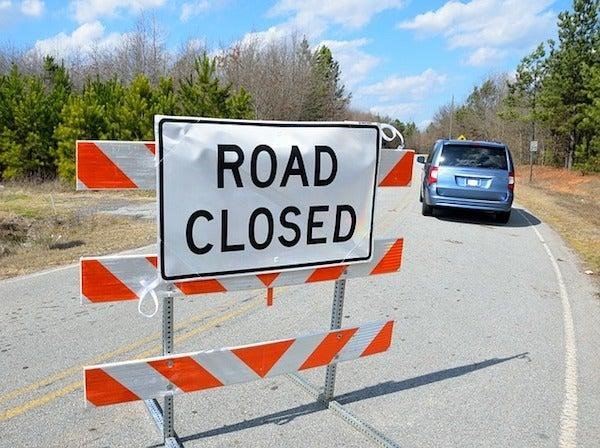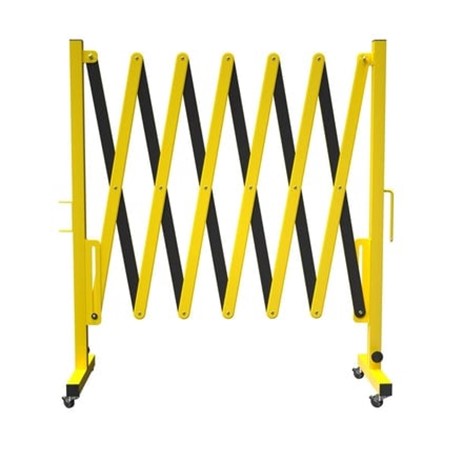Barricades may not be the most exciting piece of equipment, but they're absolutely crucial tools for any site's safety management plan, and in many cases, may be required to meet various safety standards. For instance, among OSHA's many resources is a description of an employer's duty to help prevent accidents from falling. The OSHA document explains an employer's need for "Barricading the area into which objects could fall, prohibiting employees from entering the barricaded area, and keeping objects far enough from an edge or opening to prevent them from falling to a lower level." OSHA's resources identify many other occasions where different barricade types may be required as well.
But before we dive into the various barricade types and purposes, let's define what a barricade is. In conversational English, this often refers to a quickly constructed pile of readily available objects strictly to block someone from going where they want to go. However in the context of site safety, the definition is simpler, and there isn't a connotation of quick, haphazard construction. Simply put, barricades are structures put into place to obstruct a person's passage.
While this general purpose is straightforward, the specific applications in the world of safety management are numerous, and there are different barricade types for these different applications.
For instance, here are some of the most common barricade types, and their specific purposes
Metal Barricade Purposes
Metal Barricades are usually constructed with galvanized or powder coated steel and look a bit like metal fence panels. They have flat or bridged feet to allow them to be free-standing, however and have hooks on one side and loops on the other so they can be linked together in a long, continuous barrier. The purpose of these practical steel barricades is to create a continuous barrier around work sites, construction zones, or traffic areas where pedestrians may not be safe. Sometimes they are also used to aide with line formation or surround the perimeter of outdoor events.
Type I, II, and III Barricades
These may also be referred to as "Type I, II, and III Traffic Barricades", and are specifically designed to be highly visible and meet safety requirements for work sites and construction zones which may occur in areas of high traffic. They typically have reflective angled stripes across orange barrier planks.
This datasheet includes specific examples of what differentiates each barricade type from the other and expounds on the purpose of these barricades by saying "The function of barricades and channeling devices is to alert drivers to hazards created by construction or maintenance operations on or near a roadway. They also are meant to guide and direct a driver safely past a hazard(s)"
Jersey Barricade Purposes
Jersey barricades, (or Jersey Barriers, as they're more often called) are concrete structures with a specific, dual-angle shape designed to redirect out-of-control vehicles from crossing into the opposite lane of traffic. Perhaps obvious based on this description, their purpose is to create barriers between lanes of traffic that meet highway safety requirements and help minimize collision damage.
A resource from the US Department of Transportation's Federal Highway Administration offers more details about how this jersey barricade works to minimize harm in the case of a collision. The resource says, "The front bumper impacts the upper sloped face and slides upwards. This interaction initiates the lifting of the vehicle…Then, as the vehicle becomes more nearly parallel with the barrier, the wheel contacts the lower sloped face…This aids in banking and redirecting the vehicle. If the vehicle is lifted too high into the air, it may yaw, pitch, or roll, which can cause the vehicle to roll over when the wheels come in contact with the ground again."
Expandable Metal Barricade Purposes
Expanding Metal Barricades like these are similar to the metal barricades mentioned above but are created to expand and collapse like an accordion. Furthermore, instead of feet, they have wheels and locking casters so they can be easily moved around. The purpose of barricades like these is to close off hazardous equipment such as electrical equipment or heavy machinery so that it can be accessed when needed, but has a barrier of protection from accidentally interfering with this dangerous equipment. Or often they are used to close off warehouse loading docks when they're not being used to prevent trip and fall accidents. The expandability makes them useful for a wide variety of warehouse safety needs.
Plastic Barricade Purposes
Plastic barricades have a very similar structure to the steel barricades mentioned above but are made from plastic. This makes them more lightweight and therefore ideal for serving impermanent or frequently changing needs. The purpose of this kind of lightweight plastic barricade is to block off access quickly and with minimal set-up time.
If you want to learn more about what specific barricade types might be required for your workplace, be sure to stay updated with OSHA's resources for your specific industry.












No comments
Post a Comment